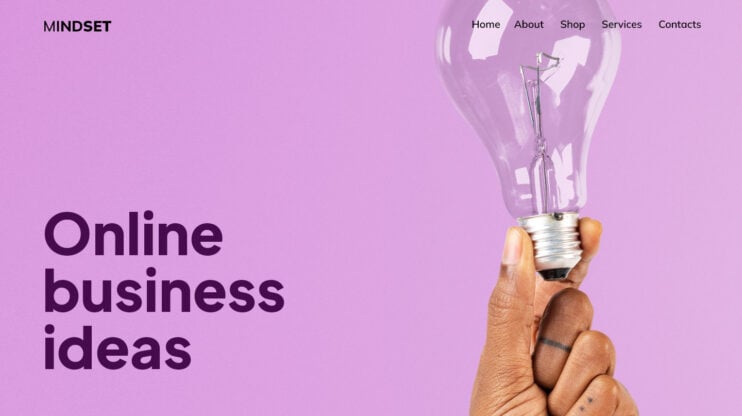Understanding product-market fit is crucial for success when launching a new business venture. Without it, your product risks failing to meet customer needs, leading to wasted resources and missed opportunities. This article will help you grasp the importance of product-market fit and guide you through actionable steps to achieve it.
Why is this so important? Product-market fit is the foundation upon which your growth strategies rest. It’s about ensuring your product aligns with market demands and keeps customers returning. Without this fit, scaling your business could lead to more harm than good, ultimately stalling your growth.
FAQ
What does product-market fit mean?
Product-market fit occurs when a product meets the needs of a specific market and solves a real problem for a target audience. This means that customers find value in the product, are willing to pay for it and use it consistently. Achieving this fit is crucial for business growth and sustainability.
What are the 4 types of product-market fit?
The four types of product-market fit are:
- Problem-solution fit: Matching the product to a real customer need.
- Minimum viable product (MVP) fit: A basic version of the product that satisfies early adopters.
- Growth fit: Scaling the product based on market demand.
- Channel fit: Aligning the product with distribution channels to reach customers efficiently.
What is the 40% rule product-market fit?
The 40% rule states that if at least 40% of your users would be “very disappointed” if they could no longer use your product, you have likely achieved product-market fit. This metric indicates strong user engagement and product satisfaction.
What are the three steps to determine product-market fit?
The three steps to determine product-market fit are:
- Identify your target audience and understand their problems.
- Build a product that addresses those problems effectively.
- Measure customer feedback and satisfaction to see if your solution resonates with the market.
What is an example of a market fit?
An example of market fit is the rise of streaming services like Netflix. Netflix met the growing demand for convenient, on-demand entertainment by providing a subscription-based service that resonated with a large audience, leading to rapid growth and customer loyalty.
How to tell if you have product-market fit?
You can tell you have product-market fit when demand for your product increases, customer retention is high, and positive word-of-mouth drives organic growth. Key indicators include consistent sales growth, user engagement, and strong feedback from satisfied customers.
What is another word for product-market fit?
Another term for product-market fit is “market validation,” which refers to proving that a product effectively meets the needs of its target market.
What is product-market fit before scaling?
Before scaling, product-market fit means that you’ve confirmed the product solves a real problem for your target audience and there is sufficient demand to support growth. Scaling without product-market fit often leads to failure, as growth will be unsustainable without a strong customer base.

Create your online store in minutes!
Looking to sell online? Develop and launch your store with 10Web AI Ecommerce Website Builder.
Understanding product-market fit
Product-market fit means your product meets real customer needs. It’s key to success.
Let’s look at what it is, why it matters, and some examples.

The concept of product-market fit
Product-market fit happens when your product solves a problem people care about. It’s about matching what you offer with what customers want. You know you have it when people often buy and use your product.
To find product-market fit, you need to:
- Know your target market
- Understand their problems
- Create a product that fixes those problems
- Test and improve based on feedback
It’s not a one-time thing. You have to continuously make sure your product still fits as markets change.
The importance of value and customer needs
Product-market fit is all about value. Your product must solve real pain points for customers. If it doesn’t, they won’t buy it, no matter how cool it is.
To create value, you need to:
- Talk to potential customers
- Find out their biggest problems
- Make a product that solves those problems better than anything else
Remember, customers don’t just want features. They want solutions to their issues. Focus on their needs, not just what you think is cool.
Examples of product-market fit

Here are some products that found a great market fit:
- Uber: Solved the pain of finding and paying for rides
- Airbnb: Made it easy to find unique places to stay
- Slack: Fixed communication issues in teams
These products have taken off because they have fixed big problems for many people. They kept improving based on what users wanted.
Minimum viable product testing and feedback
A minimum viable product helps test ideas quickly and cheaply. It focuses on core features to get user feedback early in the development process.
Core components of an MVP
An MVP has a few key parts:
- Basic features: Include only what’s needed to solve the main problem.
- Target audience: Focus on a specific group of users.
- Feedback system: Set up ways to collect user input.
- Key metrics: Decide how you’ll measure success.
Your MVP should be simple but still work well. Don’t add extra bells and whistles at this point. Stick to what matters most for your product idea.
Testing and iteration
Once you launch your MVP, watch how people use it. Look for these things:
- What features do users like most?
- Where do they get stuck?
- What’s missing that they want?
Use this info to make your product better. Make small changes often. Test each change to see if it helps. Keep doing this until your product fits what users need.
Remember, an MVP is just the start. It’s okay if it’s not perfect. The goal is to learn and improve fast.
Feedback loop and customer insights
Getting customer feedback helps you improve your product and keep customers happy. You can learn what works well and what needs fixing by talking to users and looking at data.
Sourcing customer feedback
You can get feedback in many ways. Use surveys to ask customers questions about your product. Check reviews on sites like Amazon or the App Store. Look at social media to see what people are saying. Set up a way for users to report bugs or suggest ideas. Track how people use your product with analytics tools.
Make it easy for customers to give feedback. Add a feedback form to your website. Put a “Contact Us” link in your app. Send follow-up emails after purchases to ask how it went. The more places you collect feedback, the more valuable insights you’ll get.
Customer interviews and surveys
Talking directly to customers gives you deep insights. Set up one-on-one interviews to learn about their needs and pain points. Ask open-ended questions like “How do you use our product?” and “What would make it better?” Listen carefully and take good notes.
Surveys let you gather feedback from many users at once. Keep surveys short, with 5-10 questions max. Mix multiple-choice and open-ended questions. Ask about specific features and overall satisfaction. Use a net promoter score question to gauge loyalty. Send surveys at key points, like after sign-up or when someone cancels.
Analyzing market demand
Market demand shows if people want your product. Looking at demand helps you find good sales channels and spot ways to grow.
Assessing demand and channel opportunities
To check demand, look at how many people search online for products like yours. You can use tools like Google Trends or keyword research tools. These show if interest is going up or down over time.
Talk to potential customers. Ask them about their needs and if they’d buy your product. This gives you real feedback.
Look at your competitors, too. See how many customers they have and how fast they’re growing. This can tell you if there’s room for your product.
Try selling a small amount of your product. See how quickly it sells and what people say about it. This test can show if there’s actual demand.
Check different sales channels. See where your target customers like to shop. This could be online stores, social media, or physical shops. Pick the channels that reach the most customers.
Identifying the target market
Finding your ideal customers is fundamental to success. You need to know who they are and what they want. This helps you make products they’ll love and market to them better.
Defining the ideal customer
Your ideal customer is someone who needs what you’re selling. Think about their age, job, income, and lifestyle. What problems do they have? How can your product help? Make a list of these traits.
You can look at your current customers for clues. Who buys from you the most? Why do they like your product? This info helps you spot patterns.
Don’t forget about your product’s features. Which ones solve specific problems? Match these to customer needs.
Market research techniques
To learn about your target market, you need good research. Start with online surveys. Ask people about their likes, dislikes, and buying habits. Use social media to see what folks are saying about products like yours.
Phone interviews work well, too. You can ask more detailed questions and get more insightful answers. Try to talk to both current and potential customers.
Look at data and sales from your website. See who’s buying and what they’re getting. This shows you who’s interested in your stuff.
Check out your rivals. Who are they selling to? This might show you markets you’ve missed.
Utilizing the buyer persona
A buyer persona is like a made-up person who represents your ideal customer. It helps you picture who you’re selling to. Give this person a name, job, and backstory.
Use the info from your research to make your persona real. Write down your ideal customer’s goals, fears, and what they look for in products. This makes it easier to create marketing that speaks to them.
When you’re making choices about your product or ads, ask yourself what your persona would think. Would they like it? Would it solve their problems? This keeps you focused on your target market’s needs.
Update your persona as you learn more. Your target market might change over time, so your persona should, too.

Metrics to gauge fit
Tracking the right numbers helps you know if your product meets customer needs. Let’s look at some key ways to measure how well your product fits the market.
Net promoter score and retention rates
Net promoter score (NPS) shows how likely customers are to recommend your product. Ask customers to rate your product on a scale of 0-10. Those who give 9-10 are promoters. 7-8 are passive. 0-6 are detractors. Subtract the percentage of detractors from promoters to get your NPS.
A high NPS means customers love your product. Low scores mean you need to improve. Track NPS over time to see if you’re making progress.
The retention rate measures how many customers keep using your product. A high rate means you’re meeting customer needs. Low rates signal problems. Compare your rates to industry benchmarks to gauge your strategy’s effectiveness.
Conversion and bounce rates
The conversion rate shows how many visitors take a desired action. This could be signing up, making a purchase, or some other goal. A rising conversion rate means your product is becoming more appealing.
To find your rate, divide the number of conversions by total visitors. Multiply by 100 for a percentage. Test different versions of your site or app to boost conversions.
Bounce rate is the percentage of visitors who leave quickly without taking action. High bounce rates can mean your product isn’t meeting expectations. Look for ways to keep visitors engaged longer.
Marketing and strategy
Finding the right strategy for your product and the market takes work. You’ll need to adjust your approach and improve your offering over time.
Adapting the value proposition
Your value proposition is key to product-market fit. Look at what customers want and need. Change your messaging to highlight how your product solves their problems.
Talk to users often to learn what they like and don’t like. Use this feedback to fine-tune how you describe your product’s benefits.
Test different ways of explaining your value. Try new taglines or feature descriptions. See which ones get the best response.
Be ready to pivot if needed. Your initial idea of what customers want may be wrong. Stay flexible and keep adapting until you find what clicks.
Iterative product development
Build your product in small steps. Start with a basic version and get it to users fast. Watch how they use it. Ask for their thoughts. Use this info to plan your next update.
Make changes based on what you learn. Add features users want. Remove parts they don’t use. Fix the problems they point out.
Release new versions often. Each update should make the product a better fit for user needs.
Try A/B testing to compare different versions. See which one users prefer. Use data to guide your choices. Keep improving, even after users love and tell others about your product.

Create your online store in minutes!
Looking to sell online? Develop and launch your store with 10Web AI Ecommerce Website Builder.
Marketing and growth tactics
Getting your product in front of customers is essential for success. Clever marketing helps you reach the right people and grow your user base. Let’s look at some ways to do this.
Organic versus paid marketing
Organic marketing uses free methods to spread the word about your product. This includes social media posts, blog articles, and search engine optimization. This long-term goal takes time, but organic marketing can build customer trust.
Paid ads let you target specific groups quickly. You can run ads on social media, search engines, and other websites. Paid marketing costs money but can bring fast results.
A mix of both often works best. Start with organic efforts to learn what connects with users. Then, use paid ads to boost your reach.
The role of product marketing
Product marketing helps you explain why people should use your product. It focuses on how your product solves customers’ problems.
You need to know your users well to do this right. Create clear messages about what makes your product special. Share these through your website, emails, and sales materials.
Product marketing also involves getting feedback from users. This helps you improve your product and how you talk about it.
Work closely with your product team to keep marketing and features in sync.
Customer acquisition and retention
Getting new customers and keeping existing ones are important parts of business success. Companies that focus on both can grow their customer base and build loyalty.
Building effective customer relationships
To build good relationships with customers, start by knowing their needs.
Listen to what they say and ask for feedback often. Use that info to make your product or service better.
Offer great customer service. Be quick to answer questions and fix problems. Train your team to be helpful and friendly.
Give customers reasons to stick around. You could have a loyalty program with rewards. Or send special offers to people who have bought from you before.
Keep in touch regularly. Send emails about new products or helpful tips. But don’t overdo it – no one likes too many messages.
Make it easy for customers to use your product or service.
Have clear instructions and good support. The easier it is, the more likely they’ll keep using it.
Product positioning and management
Product positioning and management help you create a product that customers want. A clear plan guides your decisions and helps you reach the right people.
Establishing product roadmap
A product roadmap is a plan that shows how your product will grow over time.
It helps you set goals and decide what to build next. Your roadmap should match what your customers need.
To make a good roadmap:
- Talk to customers
- Look at market trends
- Set clear goals
Start with a simple version of your product. This lets you test it quickly with early users. Their feedback will help you improve.
As you learn more, update your roadmap. Be ready to change plans if needed. Your roadmap isn’t set in stone.
Use a tool to track your roadmap. This makes it easy to share with your team. It also helps you see how well you’re meeting your goals.
Remember to balance short-term fixes with long-term plans. This keeps your product moving forward while still meeting current needs.
Aligning business model and product
A good business model and product work together to meet customer needs. The business model canvas helps map out key parts of your business. It shows how your product fits into the bigger picture.
Business model canvas implementation
The business model canvas is a tool to plan your business. It has nine parts:
- Customer segments
- Value proposition
- Channels
- Customer relationships
- Revenue streams
- Key resources
- Key activities
- Key partners
- Cost structure
Fill in each part to see how they connect.
Your value proposition is what your product offers customers. It should solve a problem they have.
Look at how your product fits with other parts of the canvas. Does it match your customer segments?
Can you deliver it through your channels? Make sure all parts of your business support your product.
The canvas helps you spot gaps or misalignments. You might find you need to change your product or business model.
Keep testing and adjusting until they fit well together.
Conclusion
Achieving product-market fit is an essential milestone for any startup looking to succeed. It goes beyond just having a great product; it’s about creating something that truly resonates with your target audience and addresses their needs effectively. By following the steps outlined in this article—understanding your market, building an MVP, and continuously adapting based on feedback—you can set the foundation for sustainable growth.

Create your online store in minutes!
Looking to sell online? Develop and launch your store with 10Web AI Ecommerce Website Builder.











